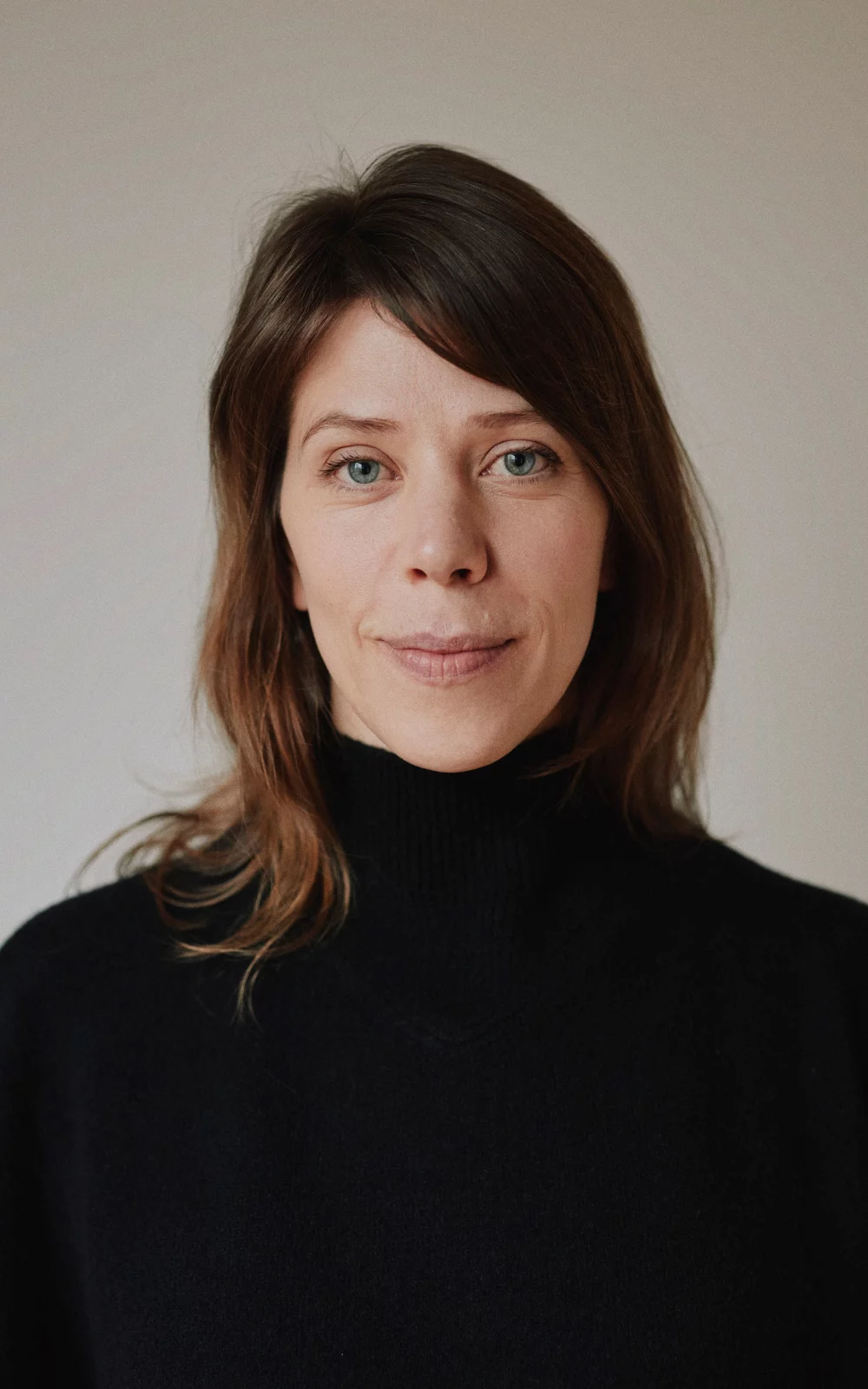
A poetic-chaotic story of healing
21.09.2024 | Nora Fingscheidt's "The Outrun" @Berlinale

Five years ago, North German Director Nora Fingscheidt started her triumphal march at the Berlinale with her drama "Systemsprenger". Now the 41-year-old is back at the International Film Festival with a MOIN-funded film: "The Outrun", based on the memoirs of Amy Liptrot. The leading role is played by Saoirse Ronan. It is the story of an inner healing process set against the harsh backdrop of the Scottish Orkney Islands. By Britta Schmeis
Meditative and at the same time threatening, but always full of magic, the camera dives under the sea of the stormy Scottish coast, captures seaweed and algae, follows seals swimming slowly through the water and then there is this voice from off-screen. It tells of the drowned sailors who turn into seals. They come ashore at night and dance naked on the beach before returning to the sea before dawn. It is one of these Scottish mythologies that run through Nora Fingscheidt's "The Outrun", which was supported by the MOIN Film Fund. She repeatedly finds analogies to the life of her protagonist Rona (Saoirse Ronan), as well as to nature, the stormy winds and the powers of the sea. The unfathomable nature becomes a symbol of Rona's inner life, who has returned to her homeland, the Orkney Islands, after ten excessive years in London, including alcohol addiction.

Associative narrative style
The Scottish Script Writer and journalist Amy Liptrot wrote down and published this story eight years ago, it is her story - in diary entries, told in fragments, full of memories of her childhood with her bipolar father, a mother who takes refuge in faith, her crashes in London clubs, the repeated promises to her boyfriend to finally stop drinking only to crash again, her failure to continue her biology studies. "I had a huge amount of respect when Executive Producer Sarah Brocklehurst gave me the book and wondered how it could be adapted for a film. It all takes place in Amy's head," says Nora Fingscheidt on the sidelines of the 74th Berlinale.
And so she chooses a non-linear, associative narrative, allowing scenes that are far apart in time to flow into one another. "It was clear to me from the start that it had to be an audio-visual film that needed a lot of poetry, that had to be chaotic and then find its peace," says the Braunschweig-born Director and Script Writer, who lived in Hamburg for a long time. Amy, who is called Rona in the film, had a life marked by madness from the very beginning. On the day she was born, her father had to be flown to hospital after a manic episode, as a girl she has to watch him believe he can conquer the wind, at some point the police have to protect the little family from him and her mother separates. But even as an adult, Rona still feels responsible for him, and her father's destructive behaviour is seething inside her. Rona flees to London and then returns ten years later, after countless crashes and therapy, by which time her caring boyfriend (Paapa Essiedu) has long since left her.
Electrobeats next to the sound of the sea
She seeks peace on the deserted islands and on her parents' sheep farm. Fingscheidt repeatedly chooses impressive images for this. She superimposes the sound of the roaring sea, the fierce winds, the booming beat of electronic music, the music to which Rona once drank herself into unconsciousness. Now they accompany her in her work with the sheep, her walks on the island and, at some point, in her self-imposed solitude on one of the smallest Orkney islands, Papa Westry. There she searches for the endangered corncrake for a nature conservation programme.
Saoirse Ronan was intended for this role from the very beginning, Fingscheidt wrote it together with Amy Liptrot - and the American actress, who became famous in 2007 with "Abitte" and won the Golden Globe for Best Actress in a Leading Role in 2018 for her role in "Lady Bird", fulfils it magnificently, in ecstatic tripping, desperate outbursts, thoughtful moments. Her hair, sometimes blue, sometimes red, sometimes hydrogen blonde and then with only blue tips, are points of reference for the audience, which they might not have needed, but which absolutely belong to the character.
A figure always on the edge
"The fact that Rona becomes dry and finds peace with her extremes, in the very place she didn't want to be, doesn't mean that she now becomes a good girl and finds a nine-to-five job," says Nora Fingscheidt. At one point in the book, it says "The Edge is my home, the edge is where I come from". For Nora Fingscheidt and her team, this was something of a mantra during filming.
There is always a "nerd level" to the character of Rona, as Nora Fingscheidt calls it. "Rona doesn't just deal with her addiction, but with the whole universe, the world around her, nature apart and what it all does to her."
"The Outrun" is not an alcoholic drama, even if addiction is of course part of the story, Nora Fingscheidt shows it with all its effects in drastic scenes, which Saoirse Ronan portrays in a painfully tangible way. For the Directors, it is the story of an inner healing process - magical, ecstatic, poetic and set against a magnificent backdrop, with an equally great leading actress. You immerse yourself in this film, like the seals drifting through the stormy sea.
more articles







